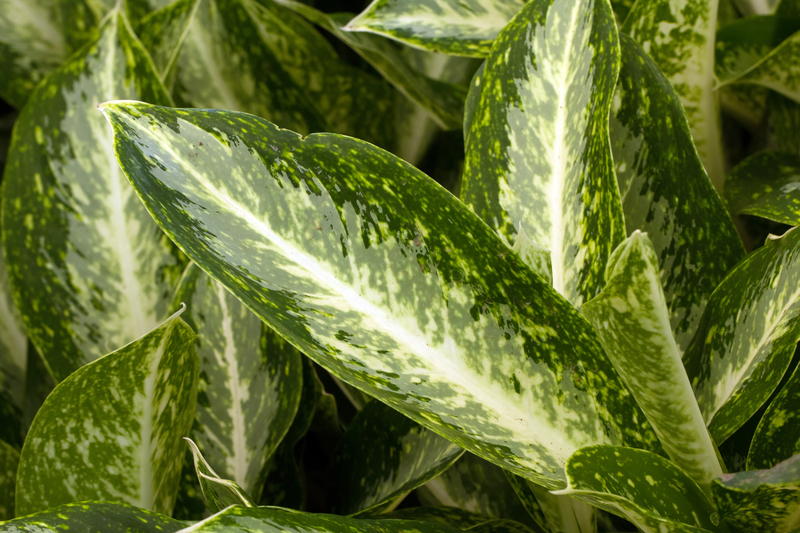Exploring Vertical Gardening Techniques
Posted on 03/09/2025
Exploring Vertical Gardening Techniques: A Comprehensive Guide
Thinking about transforming a tiny balcony or maximizing your spacious backyard? Vertical gardening could be the innovative solution you're searching for. As urban spaces shrink and environmental awareness grows, vertical gardening techniques are taking root--literally! These methods allow you to cultivate lush, productive gardens upwards, saving space, enhancing aesthetics, and even improving urban air quality.
What Is Vertical Gardening?
Vertical gardening involves growing plants vertically, typically on upright structures or walls, rather than spread across the ground. This technique can be as simple as hanging pots on a fence or as advanced as engineered living walls with automated irrigation systems. Vertical garden methods make efficient use of space and can be applied both indoors and outdoors, offering endless design potential and functional benefits.
Advantages of Vertical Gardening
- Space optimization: Perfect for small patios, balconies, and urban spaces.
- Improved air quality: Plants absorb toxins and carbon dioxide, releasing fresh oxygen.
- Aesthetic appeal: Vertical gardens serve as vibrant living art, enhancing any area's beauty.
- Enhanced accessibility: Easier to reach for planting, maintenance, and harvesting.
- Maximized yields: Increase production by using vertical layers and sunlight more effectively.

Popular Vertical Gardening Techniques
Choosing the right approach depends on your available space, budget, and the look you wish to achieve. Here are some tried-and-true vertical gardening methods:
1. Trellises and Arbors
- Trellises allow climbing plants--like cucumbers, beans, and peas--to grow upward instead of sprawling across the ground.
- Arbors serve as both garden entrances and supports for flowering vines or fruiting plants.
Installing a trellis is one of the simplest vertical garden techniques. Materials range from wood and metal to coated wire. Pair your plants with a sturdy structure, and you'll soon have both a productive and eye-catching vertical feature.
2. Wall-Mounted Planters and Pocket Gardens
- Wall planters can be crafted from wood, fabric, plastic, or recycled materials.
- Pocket gardens use fabric or felt containers arranged on a wall and filled with soil for planting herbs, greens, and flowers.
These methods are incredibly versatile, allowing you to cover boring walls with fresh greenery. They're especially favored for herb gardens in kitchens or balcony spaces.
3. Vertical Garden Towers and Stacked Planters
- Garden towers feature stacked layers of planters, often circular, maximizing growing space.
- Stacked planters allow you to grow several types of plants in a single footprint, with drainage and sun exposure distributed across different levels.
Garden towers are excellent for strawberries, lettuce, and even root vegetables like radishes, making them a popular choice in vertical gardening systems.
4. Living Green Walls
- Living walls are living installations typically installed indoors or outdoors.
- Automated watering and nutrient systems make them lower maintenance than they appear.
These vertical gardens are often used in offices or public spaces, providing natural beauty and functional air purification. They range from small, DIY kits to expansive, professionally-installed systems.
5. Hanging Planters and Suspended Gardens
- Utilize planters that hang from ceilings, beams, or railings.
- Use classic macrame hangers or modern self-watering designs for an urban jungle look.
Hanging gardens enable you to create layers of plants at eye level or overhead, ideal for trailing or cascading plant species such as pothos, spider plants, or trailing herbs.
Planning Your Vertical Garden
Before building your vertical garden, take these key factors into account:
- Sunlight: Observe the light conditions, as most vegetables and flowering plants need at least 6 hours of direct sun daily.
- Structure strength: Ensure walls, fences, or shelves can support your plant's mature weight and moisture needs.
- Watering access: Plan for easy irrigation and drainage to prevent waterlogging or dry spells.
- Plant selection: Choose species that thrive vertically and complement each other's light and water requirements.
Good planning lays the groundwork for a thriving vertical garden that is both functional and beautiful.
Soil and Growing Mediums
Vertical gardening demands well-draining, lightweight soil or soilless mixes. Consider options such as coconut coir, peat moss blends, or compost-enriched potting soils. For hydroponic vertical gardens, recirculating nutrient solutions take the place of soil entirely.
Best Plants for Vertical Gardening
Not all plants are ideally suited for upright growth. When choosing what to grow, keep these plant categories in mind:
- Climbers and vines: Passionflower, morning glory, sweet peas, beans, and cucumbers.
- Compact vegetables: Lettuce, spinach, chard, small peppers, and bush tomatoes.
- Herbs: Basil, mint, oregano, thyme, parsley, and chives.
- Strawberries: Especially productive in stacked or pocket planters.
- Ornamental plants: Ferns, succulents, air plants, and small flowering annuals.
Think about sun, water, and harvest needs when mixing species. For a more resilient garden, use companion planting strategies, pairing mutually beneficial plants together.
How to Build a DIY Vertical Garden
If you love hands-on projects, building your own vertical garden wall or planter can be both economical and satisfying. Here's a general step-by-step approach:
- Decide on your structure: Choose between trellises, stacked planters, pallets, or repurposed shelves according to your space.
- Select your plants: Pick varieties based on the light, temperature, and season.
- Prepare your base: Install anchors, hooks, or shelves as needed. Check for wall stability and ensure waterproofing for indoor gardens.
- Add your planters: Fill with lightweight, nutrient-rich growing medium.
- Install irrigation: Drip irrigation or self-watering systems are best for convenience and water efficiency.
- Plant and position: Place tallest or trailing plants higher up, compact types below for easy care.
- Maintain regularly: Fertilize as needed, prune to promote airflow, and check for pests or diseases.
Vertical garden installation is customizable; reuse old shoe organizers, create a pallet garden, or mount rows of recycled bottles--your creativity is the only limit!
Tips for Success with Vertical Gardening
- Monitor moisture: Vertical planters dry out faster, so consistent watering is vital.
- Rotate and prune: Turn hanging or leaning planters occasionally for even sunlight; trim regularly to prevent overgrowth and shading.
- Feed wisely: Fertilize more often in small containers, as nutrients leach out quickly.
- Start small: Begin with a single wall panel, trellis, or tower to learn what works best in your space.
- Embrace ongoing learning: Each environment is different--keep experimenting with different plants and layouts.

Innovative Trends in Vertical Gardening
As demand grows for sustainable urban gardens, new vertical gardening systems and trends are emerging:
- Smart hydroponic vertical gardens: Automated systems with grow lights and app-controlled watering for hands-off gardening.
- Recycled material projects: Upcycling pallets, plastic bottles, and shipping containers into green walls and towers.
- Mobile vertical gardens: Moveable garden carts or wheeled towers offer flexibility for small-space gardeners.
- Edible balconies: Balcony rail planters and compact walls are enabling fresh food production in cities.
- Architectural living walls: Large-scale building facades are being transformed with engineered greenery, boosting biodiversity and thermal insulation.
Conclusion: The Future of Urban Greening
From beginner DIY projects to advanced hydroponic installations, vertical gardening techniques offer innovative ways to make the most of any space. Whether your aim is to grow more food, create a natural privacy screen, or green up your home's aesthetic, there's a vertical garden solution for you.
Embrace vertical growing to:
- Maximize limited space,
- Grow healthier, fresher plants,
- Reduce your carbon footprint,
- And reconnect with nature.
If you're ready to take your gardening to new heights, start exploring vertical gardening today! With the right information, a bit of creativity, and a desire to grow, your vertical oasis can thrive--no matter how much space you have.
Further Resources
- Wikipedia: Vertical Gardening
- Royal Horticultural Society: Vertical Gardening Advice
- Gardeners Supply: Vertical Gardening Basics
Grow up, not out, and discover a world of possibilities with vertical garden techniques!



